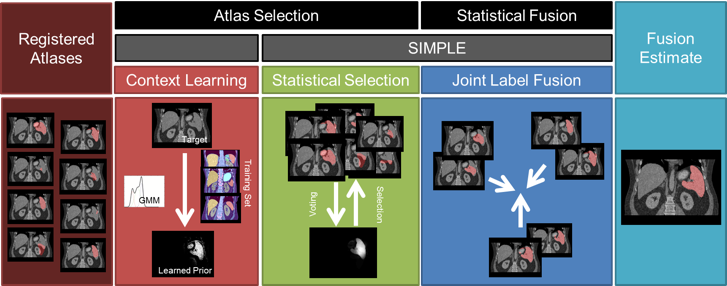SIMPLE Is a Good Idea (and Better with Context Learning)
Zhoubing Xu, Andrew J. Asman, Peter L. Shanahan, Richard G. Abramson, Bennett A. Landman. “SIMPLE Is a Good Idea (and Better with Context Learning)”, In International Conference on Medical Image Computing and Computer Assisted Intervention (MICCAI), Boston, MA, September 2014.
Full text: PubMed
Abstract
Selective and iterative method for performance level estimation (SIMPLE) is a multi-atlas segmentation technique that integrates atlas selection and label fusion that has proven effective for radiotherapy planning. Herein, we revisit atlas selection and fusion techniques in the context of segmenting the spleen in metastatic liver cancer patients with possible splenomegaly using clinically acquired computed tomography (CT). We re-derive the SIMPLE algorithm in the context of the statistical literature, and show that the atlas selection criteria rest on newly presented principled likelihood models. We show that SIMPLE performance can be improved by accounting for exogenous information through Bayesian priors (so called context learning). These innovations are integrated with the joint label fusion approach to reduce the impact of correlated errors among selected atlases. In a study of 65 subjects, the spleen was segmented with median Dice similarity coefficient of 0.93 and a mean surface distance error of 2.2 mm.
